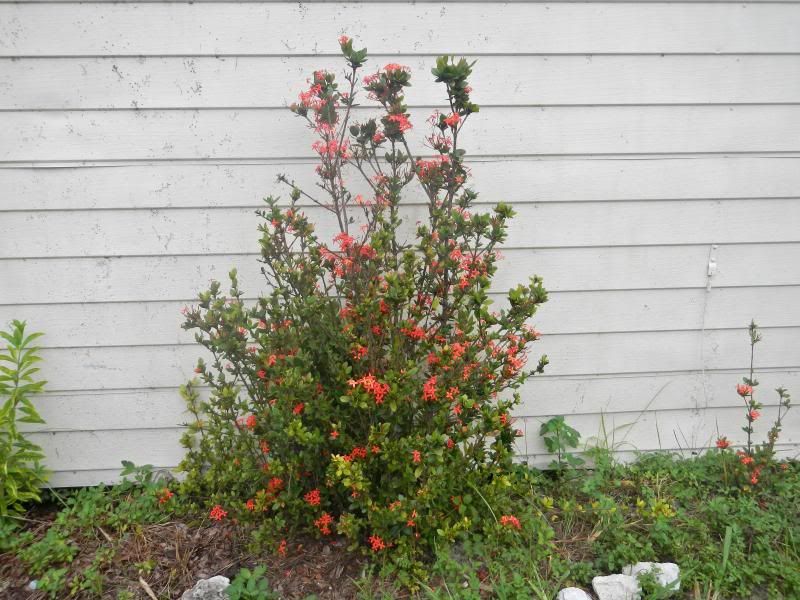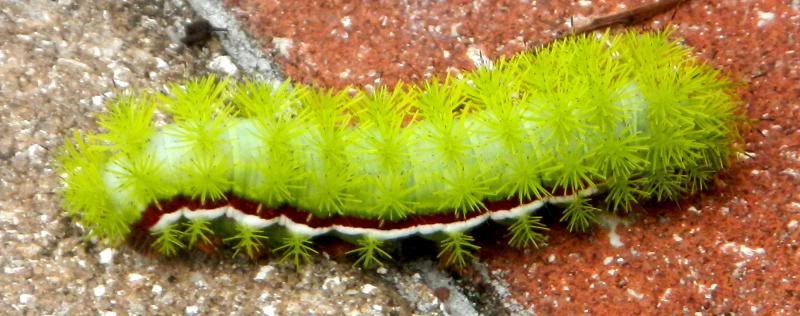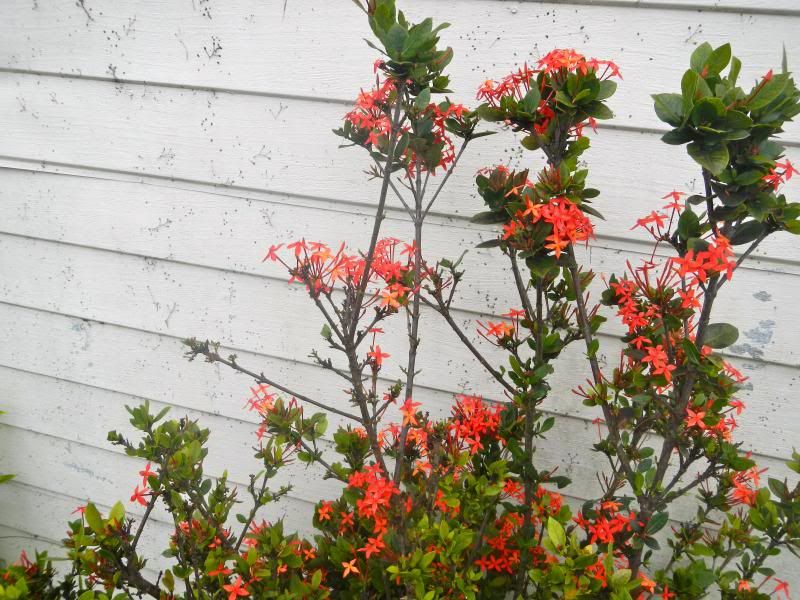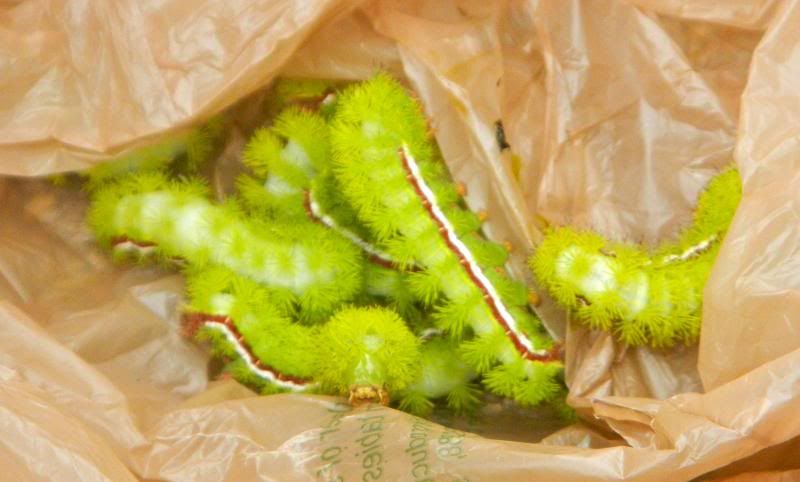Ixora coccinea, looking like crap.

On a routine dog-defecation supervisory expedition, I noted a patch of lighter green along a bare stem of the Ixora. Upon closer inspection it was revealed as a very large, bristly, neon green caterpillar. The bush turned out to be infested with about half a dozen of the whopper insect larvae, gluttonously chowing the foliage.
Gluttonous caterpillar.

Chowed foliage.

I knew that some bristly caterpillars could make you itch if you touched them with bare hands, but I wanted to pick these ones off so I could save the bush. As a precaution, I wrapped my hand in one of the plastic grocery bags I was carrying for doggy doody duty, then I gleefully set about plucking the fat worms from the bush. About three caterpillars into the plucking I realized something was not right. My hand hurt. Badly, like it was on fire. I dropped my incomplete caterpillar harvest on the ground and ran inside to the sink, while the pain in my hand increased alarmingly. The pain was more like a burn than an itch, but there was an element of itch involved. The closest thing I can compare it to is a jellyfish sting. Scrubbing my hands with dish soap and a sponge might have helped a little, but the damage was done, and the affected spots itched, throbbed and swelled up like bad mosquito bites or mild bee stings.
Now it wasn't just about saving the bush. I wanted personal vengeance against the nasty arthropods who had dared challenge my notion of Homo sapiens dominance. I would need barbeque tongs.

As mad as I was, I couldn't quite stomach squishing the caterpillars, so I just put them in a grocery bag and threw the bag in our open-top trash can. I know, that's not really any more humane a treatment. But I doubt I'm the first person to consign some small creature to a slow death by starvation, thirst, or suffocation because he didn't have the guts to do a speedy euthanasia.

The garbage can detention treatment for offending caterpillars didn't work so well. The tenacity of the caterpillars and the easily-escapable nature of the garbage can lead to a high recidivism rate for nuisance grazers. Most were back on the bush the next day. For the re-offending larvae I used garden shears in lieu of non-lethal removal methods. This proved effective, albeit disgusting.
Since these events occurred I have learned a little more about the species of poisonous caterpillar encountered. It's Automeris io, the larval stage of a beautiful, large moth that exhibits marked sexual dimorphism. The female is camouflaged, while the male uses owl eyespot mimicry as a defense from predation. The species is not restricted to Florida. In fact, Florida is the southern end of its range, and you might find in any temperate part of North America. So watch yourself, or you too might run afoul of the "Painapillar."

Something I ought to think about for the future is whether I should manage my garden to maintain plant biomass or to enhance animal diversity. If the latter, I ought to be nicer to the caterpillars.
No comments:
Post a Comment